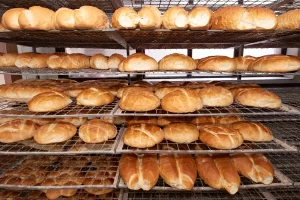Understanding the relationship between the concentration of Carboxymethyl Cellulose (CMC) and its thermal conductivity involves exploring concepts in polymer science, thermodynamics, and material physics. CMC, a widely used derivative of cellulose, exhibits unique physical properties that influence its behavior under varying concentrations, particularly in relation to its ability to conduct heat.
Basic Properties of CMC
- Structure: CMC is a water-soluble polymer derived from cellulose. The carboxymethyl groups (-CH2-COOH) attached to the cellulose backbone increase its hydrophilicity and solubility in water.
- Viscosity: One of the key properties of CMC solutions is their viscosity, which is directly influenced by the concentration of CMC. Higher concentrations lead to increased viscosity.
Thermal Conductivity of Polymers
- General Trend: In polymers, thermal conductivity is typically lower compared to metals or inorganic materials. This is due to the amorphous and complex structure of polymers that impedes the efficient transfer of heat.
- Mechanism of Heat Transfer: In solutions, heat transfer occurs mainly through the movement of molecules and the conduction through these molecules. The ease with which these molecules can move and transfer energy plays a significant role in determining the thermal conductivity.
Effect of Concentration on Thermal Conductivity
- Increased Viscosity: As the concentration of CMC in a solution increases, the viscosity of the solution also increases. This is due to the greater number of polymer chains and their interactions within the solution.
- Impeded Molecular Movement: Higher viscosity means that the movement of molecules is more restricted. In a more viscous medium, the polymer chains are entangled, and their mobility is reduced.
- Decreased Thermal Conductivity: The decreased mobility of molecules in a higher viscosity solution leads to a reduction in thermal conductivity. This is because the transfer of heat, which relies on molecular movement and interaction, is less efficient in a viscous medium.
Practical Implications
- Industrial Applications: In industries where CMC is used, especially in high concentrations, this decrease in thermal conductivity can have practical implications. For instance, in manufacturing processes where heat transfer is a factor, the concentration of CMC could influence the efficiency of heating or cooling processes.
- Material Design: Understanding the thermal properties of CMC solutions is important in the design of materials and products, particularly where temperature regulation or insulation is a factor.
- Comparison with Other Materials: It’s also relevant to compare the thermal conductivity of CMC with other polymers or materials used in similar applications to determine the most efficient option.
Conclusion
In conclusion, the thermal conductivity of Carboxymethyl Cellulose decreases with increasing concentration. This decrease is primarily due to the increased viscosity at higher concentrations, which limits the movement of molecules and hence reduces the efficiency of heat transfer. This relationship between concentration and thermal conductivity is a key consideration in the application of CMC in various industrial and material design contexts, where temperature control and heat transfer are crucial factors. Understanding and manipulating these properties allows for the optimization of CMC’s use in specific applications where thermal characteristics are a significant concern.





